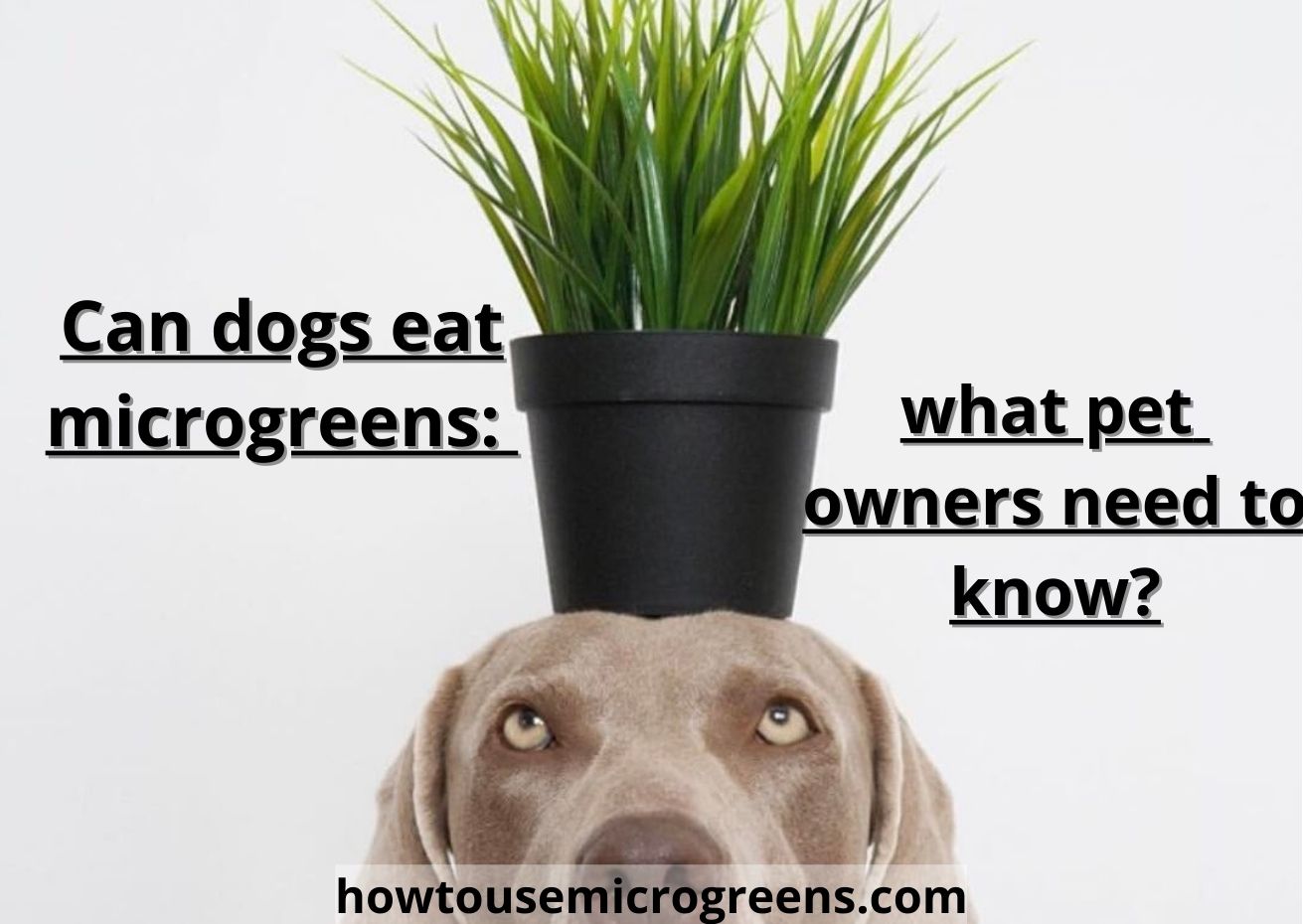Microgreens, including various leafy vegetables, have gained popularity as a nutrient-rich addition to human diets, but pet owners often wonder if it’s safe to share these vibrant greens with their furry friends. Dogs have specific dietary needs, and certain foods can be harmful to their health.
In this article, we will explore the question, “Can dogs eat microgreens?” and provide insights into the potential benefits and risks associated with feeding microgreens to dogs.

Contents
- 1 Understanding the best microgreens for dogs
- 2 Nutritional value of microgreens for dogs
- 3 Dogs’ dietary requirements
- 4 Can dogs safely eat microgreens?
- 5 Potential health benefits of microgreens for dogs
- 6 Risks and precautions
- 7 How to safely introduce microgreens for dogs?
- 8 How can I grow microgreens for my dog?
- 9 FAQ
- 10 Conclusion
Understanding the best microgreens for dogs
Microgreens are young, tender plants that are harvested just a few weeks after germination. These tiny greens are packed with an array of essential nutrients, including vitamins, minerals, and antioxidants. Common varieties of microgreens include kale, spinach, mature mustard greens, broccoli, radish, red cabbage microgreens, and many others.
Due to their concentrated nutritional content, microgreens are often praised for their potential health benefits in humans. While dogs primarily require mature vegetables and protein sources in their diet, feeding them small amounts of specific microgreens can provide additional nutritional value.
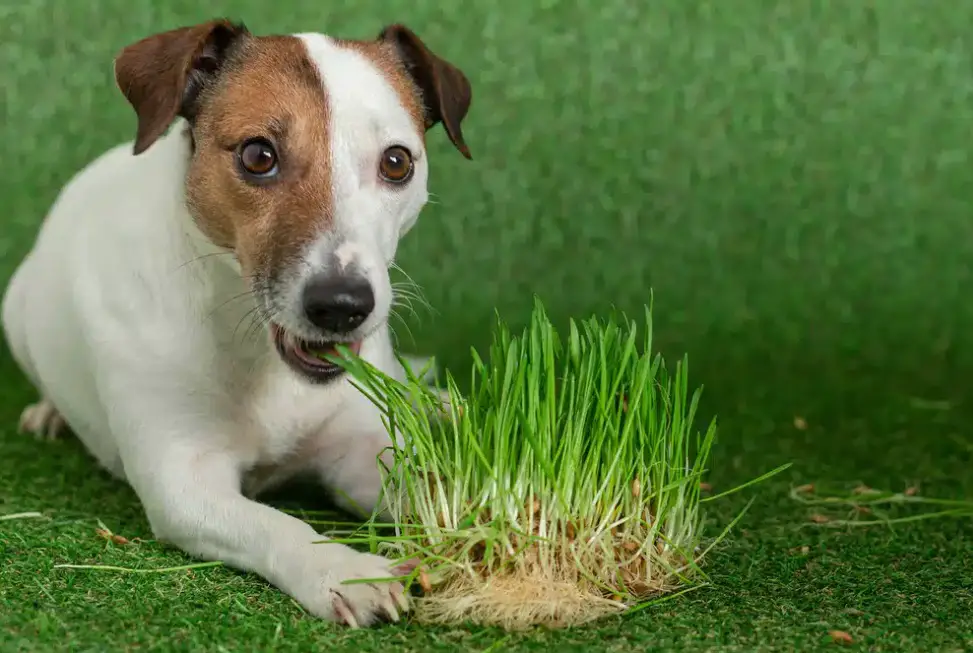
Nutritional value of microgreens for dogs
Microgreens offer a wide range of nutrients that can be beneficial to human health.
They are rich in vitamins A, C, E, and K, as well as minerals like potassium, iron, and magnesium. Additionally, microgreens are known to contain high levels of antioxidants, which help protect cells from damage caused by free radicals.
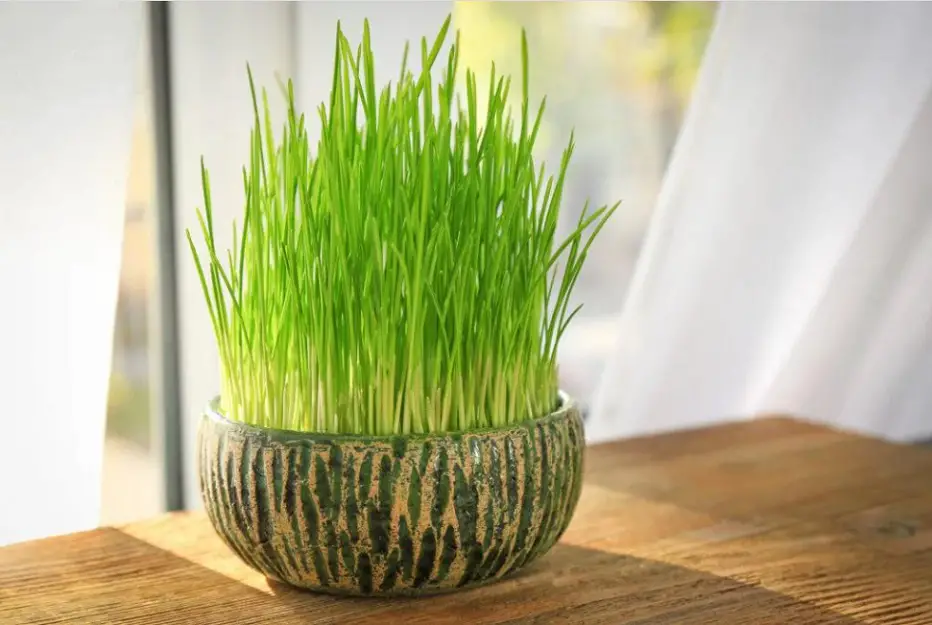
Dogs’ dietary requirements
Before considering whether dogs can eat microgreens, it’s crucial to understand their dietary requirements. Dogs are primarily carnivores, with a digestive system designed to process and derive nutrients from animal-based protein sources.
They have specific dietary needs for essential nutrients like protein, fats, carbohydrates, vitamins, and minerals. Therefore, any additions to their diet should complement their nutritional requirements.

Can dogs safely eat microgreens?
While microgreens are generally safe for human consumption, it’s essential to exercise caution when introducing them to a pet’s diet. Although dogs can derive some nutritional benefits from microgreens, they should not be considered a substitute for a well-balanced dog food diet.
It’s crucial to consult with a veterinarian before making any significant changes to a diet.

Potential health benefits of microgreens for dogs
Nutritional boost. Nutritious microgreens can offer a concentrated dose of vitamins, minerals, and antioxidants, which can complement a dog’s daily diet.
Adding fresh microgreens to their meals can provide a nutritional boost, especially if they consume commercial pet food lacking fresh plant-based ingredients.
Increased nutritional variety. Introducing small amounts of microgreens, such as wheat grass, and red acre cabbage to a diet can provide additional nutrients and enhance dietary variety.
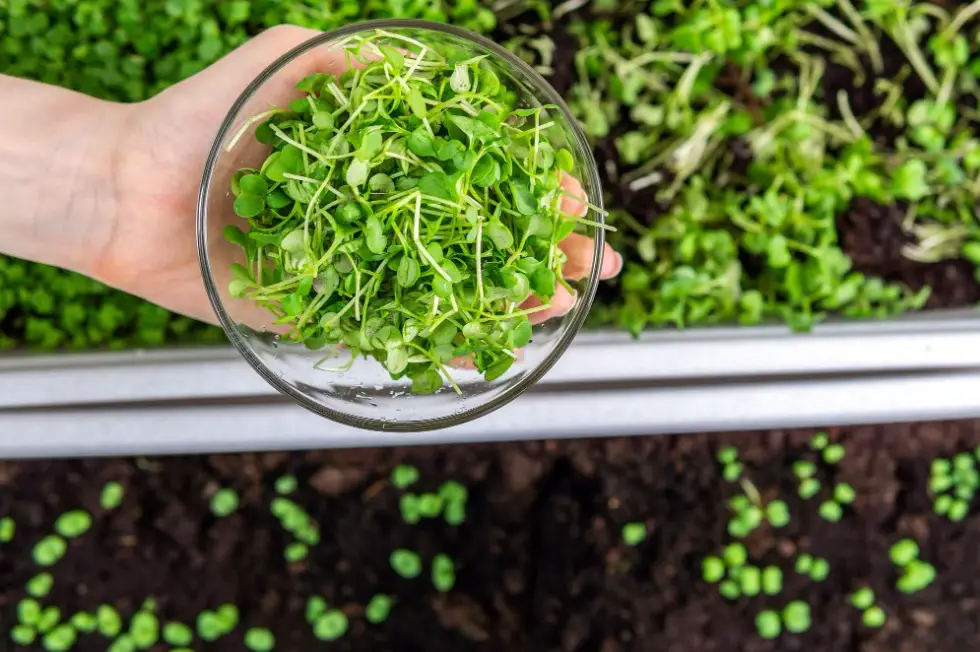
Source of fiber. Microgreens can contribute dietary fiber, which can aid digestion and support a healthy gut.
Antioxidant content. Adding microgreens, such as broccoli microgreens, red acre cabbage microgreens, and kale, which contain antioxidants to regular pet food, may help support the immune system and protect against cellular damage.
Hydration. Some types of microgreens for dogs, such as watercress, have a high water content, which minimizes the chance of a dog becoming dehydrated during the hot season.

Risks and precautions
Digestive sensitivity. Dogs may have different digestive systems and sensitivities compared to humans. Introducing new foods, including microgreens, can cause gastrointestinal problems (upset stomach) such as diarrhea or vomiting. It’s important to introduce microgreens gradually and observe the dog’s reaction.
Allergic reactions. Dogs can develop allergies to various foods, including microgreens. Watch for any signs of allergic reactions, such as itching, swelling, or difficulty breathing. If these symptoms occur, discontinue feeding microgreens and consult a veterinarian.
Toxicity. Certain microgreens, like onion and garlic, can be toxic to cats and dogs. Avoid feeding these varieties to dogs, as they can cause serious health issues such as anemia.

How to safely introduce microgreens for dogs?
Consult with a veterinarian. Before incorporating microgreens into a diet, it’s crucial to consult a veterinarian. They can provide specific guidance based on the dog’s age, breed, health condition, and dietary needs.
Choose safe microgreens. Stick to dog-safe microgreens such as broccoli, kale, spinach, or lettuce. Avoid varieties known to be toxic to dogs, like onion, mustard seeds, and garlic.
Start slowly. Introduce microgreens gradually, starting with a small amount mixed into the dog’s regular food. Observe the dog’s reaction and adjust accordingly.
Notice the reactions. Watch for any signs of digestive upset or allergic reactions. If the dog shows adverse effects, stop feeding microgreens and seek veterinary advice.

How can I grow microgreens for my dog?
Growing microgreens can be a rewarding and cost-effective way to provide fresh, nutrient-rich greens for both you and your pets. You can grow microgreens right at home. Here are some steps to help you grow microgreens for your pet friends:
Choose the right seeds. Select seeds to grow microgreens that are safe for dogs and suitable for microgreen cultivation. Opt for dog-friendly varieties such as broccoli, kale, spinach, or lettuce. Ensure that the seeds for dog’s food are high-quality and intended for sprouting or microgreen production.
Prepare the growing medium. Microgreens can be grown in various mediums, including potting soil, coco coir, or hydroponic systems. Choose a medium that is safe and free from chemicals or contaminants. Ensure proper drainage to avoid waterlogging.

Sow the seeds. Spread the seeds evenly across the growing medium. Depending on the type of microgreens, you may need to sow them densely or sparsely. Follow the instructions on the seed packet for the appropriate seeding density.
Provide optimal growing conditions. Place the trays or containers in a well-lit area where they can receive ample sunlight or artificial light. Microgreens thrive in temperatures between 60-75°F (15-24°C). Ensure proper ventilation to prevent mold or fungal growth.
Watering and maintenance. Microgreens require consistent moisture, but avoid overwatering as it can lead to rot or fungal issues. Mist the growing medium lightly or use a gentle watering method. Monitor the moisture levels and adjust accordingly to prevent drying out or waterlogging.
Monitor growth and harvest. As the microgreens grow, keep a close eye on their progress. They usually reach the ideal harvest stage in 7-14 days. Once the microgreens have developed their first set of true leaves and are around 1-3 inches tall, they are ready to be harvested.
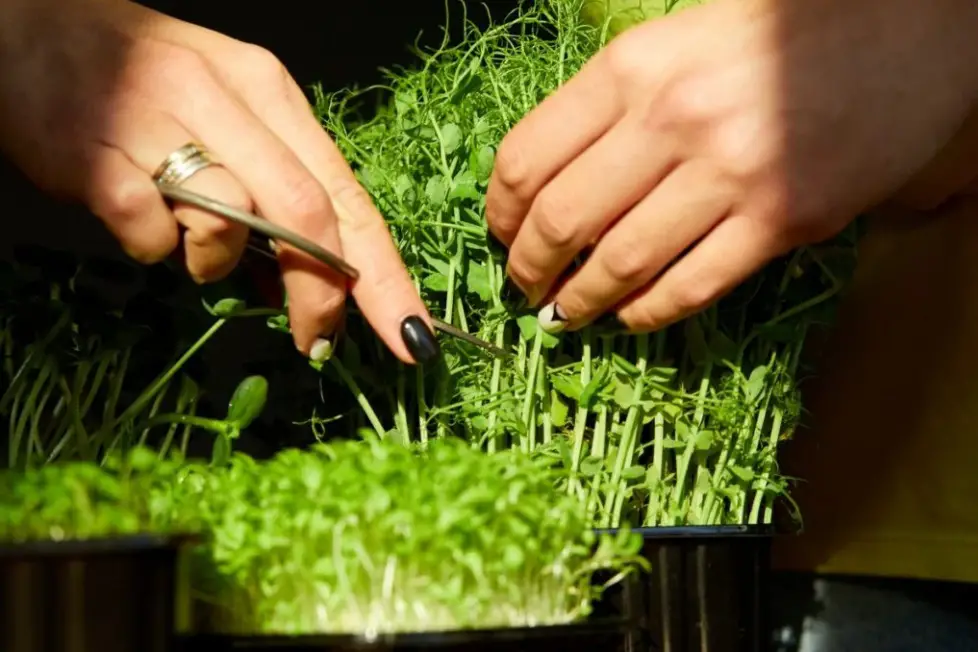
FAQ
If you have some questions left, related to the topic “Can dogs eat microgreens?”, we are glad to answer them.
Are microgreens safe for dogs?
Microgreens can be safe for dogs, but it’s important to introduce them cautiously and in moderation. While the best microgreens, such as broccoli, kale, spinach, and lettuce, can provide some nutritional benefits, they should not replace a balanced dog food diet.
Dogs have specific dietary requirements, and any additions to their diet should complement their nutritional needs. It’s crucial to consult with a veterinarian before introducing microgreens to a diet to ensure their safety and suitability.
What are the potential alternatives to microgreens for dogs?
If you’re hesitant about feeding microgreens to your dog, there are other safe and nutritious alternatives you can consider:
– Dog-specific vegetables. Dogs can benefit from certain vegetables like carrots, green beans, and sweet potatoes. These can be cooked or served raw in moderation.
– Green vegetables. Including a variety of leafy vegetables like spinach, red cabbage, kale, and broccoli in a dog’s diet can offer similar nutritional benefits as microgreens. These can be steamed, pureed, or served as small, bite-sized pieces.
– Pet grass. Growing grass, such as wheatgrass or barley grass, provides a safe and natural way to add greens to a diet. Pet grass can be grown indoors and offers a fresh source of nutrients.
– Homemade dog food. Preparing homemade dog food using fresh, whole ingredients can ensure a well-balanced diet. Including a variety of vegetables, such as leafy greens, can provide essential nutrients without relying solely on microgreens.
– Commercial dog food. High-quality dog foods are formulated to meet the nutritional needs of dogs. Choose a reputable brand that offers a well-balanced diet for your pet.
Are sunflower microgreens safe for dogs?
Sunflower microgreens are generally considered safe for dogs when offered in moderation. They are rich in vitamins and minerals, including vitamin E, which can benefit a dog’s coat and skin health. However, it’s important to note that sunflower microgreens should only be given to dogs without a shell or a husk.
The shell can be difficult for dogs to digest and may pose a choking hazard. Additionally, always consult with a veterinarian before introducing sunflower microgreens or any new food to your dog’s diet.
What animals can eat microgreens?
When considering sprouts for dogs, it’s important to choose varieties that are safe and offer nutritional benefits. Some of the healthiest sprouts for dogs include:
– Alfalfa sprouts. These sprouts are rich in vitamins A, C, and K, as well as minerals like calcium and iron. They can provide added nutrients and fiber.
– Broccoli sprouts. Broccoli sprouts contain antioxidants, vitamins, and minerals that can support a dog’s immune system and overall health. They are best served in small amounts to avoid digestive issues.
– Clover sprouts. Clover sprouts are a good source of fiber, protein, and vitamins A and C. They can contribute to a dog’s overall dietary variety and provide additional nutrients.
– Radish sprouts. Radish sprouts offer a peppery taste and are packed with antioxidants and vitamin C. They can be a beneficial addition to a dog’s diet when fed in moderation.
It’s important to remember that sprouts should be introduced gradually and in appropriate quantities, and it’s always recommended to consult with a veterinarian before adding any new food to a dog’s diet.
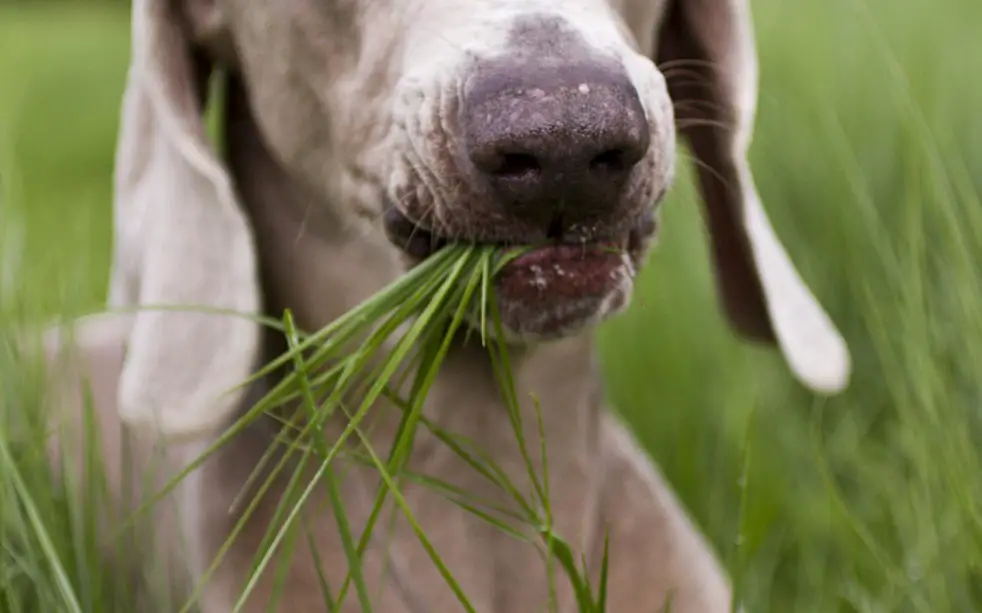
Conclusion
In conclusion, while microgreens can offer some nutritional benefits to dogs, it’s essential to approach their inclusion in a dog’s diet with caution. Consulting with a veterinarian and monitoring the dog’s response are crucial steps in determining whether microgreens are suitable for your furry friend.
Remember that microgreens should never replace a balanced dog food diet.
By prioritizing your dog’s nutritional needs and considering professional advice, you can feed microgreens and make informed decisions about incorporating safe alternatives into your dog’s diet.

